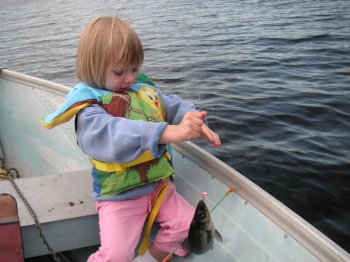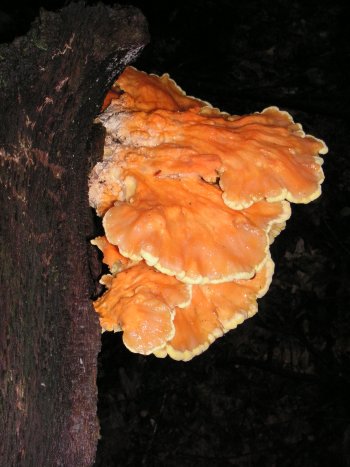New Hampshire Nature Notes
by Eric Orff
Cool, calm, silent as we slide into fall.
Tuesday 08/29/2006
There is very much a stillness to today. Cool gray skies with an occasional sprinkle, and no wind, has silenced this day, even muffling the few cars passing my house in their afternoon commute home from work. I have not heard a call of a bird all day, here or in my travels. It almost seems strangely quiet.
Late last week and early this week I did the Northeast Regional Hard Mast Survey for our Fish and Game black bear project leader. There were some surprises!
This is the second annual survey for this project. So, I have a lot to learn, not that I haven't pretty much paid attention to the oak and beech tree production for the last several decades. That was more subjective. In this survey we marked 25 each of red oak, white oak and beech trees by number for a theoretical long-term survey. Over the next several years I'll be learning the personalities of individual trees sort of speaking. I've not had such a long-term relationship with numbers of trees before.
But Thursday to my surprise the beech trees had nuts on 24 of 25 trees, that's 96%. This survey only counts whether there are any nuts or not in the 30 seconds we are allotted to gaze at the trees with binoculars. I'm not too crazy about this survey. The trees were not loaded with beechnuts, but still, to be able to see numbers in half a minute suggests that there are a good number. The red oaks had nuts on 23 of 25 trees, or 92%. And the red oak acorns were more abundant, hanging in clusters on the trees. This really surprised me as last year was a great red oak acorn year and to have two good years in a row is unusual in the last decade at least. The white oaks are having another off year based on the one cluster I checked yesterday in Concord. Only one tree had acorns. I did spot several very beautiful orange mushrooms hanging beneath a damp moss covered hemlock forest in my travels. They stood out at a distance under the wet black canopy of hemlocks and drew me near for an up-close look. Such stark beauty on a gray sullen day it seemed.
I had a great weekend adventure as my wife and I took our oldest granddaughter, Katie, alone with us to our camp in Maine for the first time. We only stayed Friday night, but she would have stayed much longer. This will give US more confidence for the next trip alone with her. She had plenty of her own. Saturday she reeled in several nice sized white perch in quick order.
The most amazing observation I had at camp started Friday evening at last light while I was on the lake fishing. I kept noticing gulls flying in and landing on the lake. There were few when we first arrived by noon, but I noticed more than usual. By Saturday morning the numbers had grown still more. In fact when I went out fishing alone at about 10:00 am I counted 39 on a set of rocks that protrudes from the lake. It was about then that I realized that schools of juvenile alewives were migrating across the lake. All east to west bound. In fact at one point I counted 20 schools within a hundred yards of my boat. An alewife school is detectable by a wake the front of the school throws up along the surface of the water. The fish are not actually flipping out of the water or anything. It is just a small wave, or ripple moving slowly across the water's surface. It is my years of observations schools of juvenile alewives trying to migrate past the dam at Northwood Lake in NH that I knew what I was seeing. Alewive schools tend to be huge with thousands, made tens of thousands of fish in it. I think it is just this mass of fish that makes the blip on the water surface. Most of the time the fish are actually a couple of feet down in the water. I watched a while and all the schools were headed in the same direction, sort of toward the outlet. My guess is the very cool temperatures Friday night chilled the lake enough to initiate the annual exodus of the millions of juvenile fish that hatched in the lake in early June and are now two or three inches long and are ready to head to the sea. Dimes to dollars that is what was happening. I checked the brook that flows into the lake from another smaller lake nearby to see if they were migrating down from there. I saw none in the 15 minutes I watched the sand bar at the mouth of the brook. So these were resident fish leaving the lake. It was an awesome thing to witness. Likely millions of fish on the move.
By noon I could count 60 gulls lulling on the lake picking off the alewives. Not in a raucous feeding frenzy that is so typical of gulls, but a quiet casual pluck here and there from the lake. The gulls were very much spread out and not clustered. By the time I left around 3:00 pm I counted a hundred gulls from my view of part of the lake from my camp's lawn. It left me wondering how the gulls knew Friday evening that the alewives would be surfacing Saturday? So many things to wonder about in the natural world. There always are more mysteries than deductions based on my own observations.
Previous Note
2006-08-24
Still toadless, katydids on the move and the grand Suncook River tour.


